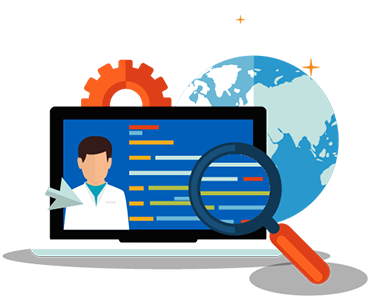Findings
Use of eHealth, mHealth & telehealth

Use of eHealth, mHealth & telehealth


Patients
HCPs
Healthcare system
Adamson AS. The Economics Burden of Atopic Dermatitis. Adv Exp Med Biol. 2017;1027:79-92. doi: 10.1007/978-3-319-64804-0_8;
Le Roux E, et al. GPs’ experiences of diagnosing and managing childhood in primary care. British Journal of General Practice 2018;68(667):73-80. doi:10.3399/bjgp18X694529;
Mehta S. Patent Satisfaction reporting and its implications for patient care. AMA Journal of Ethics. 2015 [Website] https://journalofethics.ama-assn.org /article/patient-satisfaction-reporting-and-its-implications- patient-care/2015-07 Accessed 5 Nov 2019
Note: With input from the steering committee, we have categorised these activities by level of resource required to implement, however this may vary across centres/settings (e.g. depending on existing resources)
Enabling teleconsultations/information sharing
HCP – HCP
Emergency department specialist hospital communication, Rady Children's Hospital (California), USA
MedPhone application, CH Lyon-Sud, France
Use of technology, KFMC, Saudi Arabia
Teledermatology service, Royal Devon & Exeter Hospital, UK
Use of telehealth services, Aarhus Universitetshospital, Denmark
Use of telemedicine, Hospital Italiano de Buenos Aires, Argentina
Multi-disciplinary patient education, Cayre Clinical Center, Colombia
Collaboration on the provision of patient and HCP education
Patient – HCP
Communication via the patient portal, UMC Utrecht, Netherlands
Dedicated dermatology photographer, UMC Groningen, Netherlands
Digital consultation support, CMSS (Selters), Germany
Longer and frequent consultations, OHSU (Oregon), USA
Use of telemedicine, Hospital Italiano de Buenos Aires, Argentina
Patient-HCP consultation, Cayre Clinical Center, Colombia
Designing a local or centre database
Development of a local patient registry, UniCATT (Rome), Italy
Ongoing electronic health record (EHR) development, Hospital Italiano de Buenos Aires, Argentina
Self-designed patient database, CMSS (Selters), Germany
Structured patient assessment tool, UKSH (Kiel), Germany
National patient database, Linkou Chang Gung Memorial Hospital (Taipei), Taiwan
Developing a smart phone application for patients
Innovative smartphone application: “Zalf”, UMC Utrecht, Netherlands
Physiotherapist relaxation and mobile app, Inselspital (Bern), Switzerland
Virtual Nurse mobile device application, McGill University Health Centre
(Montreal), Canada
Developing computer applications for local PCP network which can guide AD management
Frequent advice for primary care providers, Harrogate District Hospital, UK
Improving Atopic Dermatitis Care by Paediatricians (IADCBP), Rady Children's Hospital (California), USA
Facilitation of virtual consultations
Digital consultation support, CMSS (Selters), Germany
Telephone consultations, Harrogate District Hospital, UK
Enabling HCPs to perform telephone consultations
Digital consultation support, CMSS (Selters), Germany
Telephone consultations, Harrogate District Hospital, UK
Creating an educational website containing online training resources for patients
Innovative education website: “Leef! Met Eczeem”, UMC Utrecht, Netherlands